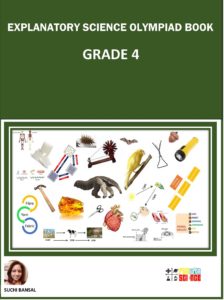PINHOLE CAMERA
Home » PINHOLE CAMERA

PINHOLE CAMERA
The pinhole camera works on the principle that light travels in a straight line (Rectilinear propagation).
The image formed by a pinhole camera is real, inverted and diminished in size when compared to the original object. Pinhole cameras are inexpensive and are easy to make.
An eclipse can be viewed using a pinhole camera.
This is the basic structure of the pinhole camera. However, nowadays the developed form of a pinhole camera uses photosensitive film instead of translucent paper to capture images. The film is later developed to obtain the photo prints.
Nowadays, of course, we use the digital cameras that store images in a computer chip. However, the basic principle of capturing the image remains the same.
MAKING A PINHOLE CAMERA
• Take two rectangular boxes that fit into one another without leaving any gap.
• Cut open one side of each box.
• Make a small hole in the larger box at the centre of the closed end opposite to the side that has been cut open.
• Cut a square of side five centimetres in the smaller box in the closed end opposite to the side that has been cut open. Cover this square with tracing paper.
• Finally, slide the smaller box into the larger box, ensuring that the pinhole and the tracing paper are in line with one another, but at the opposite ends.
• Slide the smaller box to adjust the focus so that you can capture the image of any object you want.
DIFFERENCES BETWEEN A SHADOW AND A PINHOLE CAMERA IMAGE
• A shadow is in general black and does not give the details of the object. The image formed by a pinhole camera is colourful and contains all the details of the object.
• A shadow can be bigger than the object whereas the image formed by a pinhole camera is
always smaller than the object.
• The shape of a shadow varies depending on the orientation of the object between the light and screen while the pinhole camera image is always inverted and has the same shape as the object.
DIFFERENCES BETWEEN IMAGES FORMED BY A PINHOLE CAMERA AND A PLANE MIRROR
The image in a plane mirror is virtual, erect and is of the same size as the object, laterally inverted, whereas the image formed by a pinhole camera is real, inverted and is smaller in size when compared to the object.
Moreover, the distance between the image and the mirror is the same as the distance between the mirror and the object whereas the distance between the object and the pinhole is not the same as the distance between the pinhole and the image.
Watch vidio to know more:- https://youtu.be/IcNEfwNeZss
How to make :- https://youtu.be/mxY9ouCx_UE
BOOKS
We have our e-books published on Amazon for Grade 3 and Grade 4. The books serve as an important guide for Science Olympiads organized by SOF, Silverzone, Unified Council and others. Books are designed to help students understand key science concepts.
The key highlights of the book are:
· Well explained topics
· Use of diagrams and images for
students to visualize
· Test exercise after each chapter for self-assessment and evaluation
· Interesting facts sections spread across the book
Here are the links:





